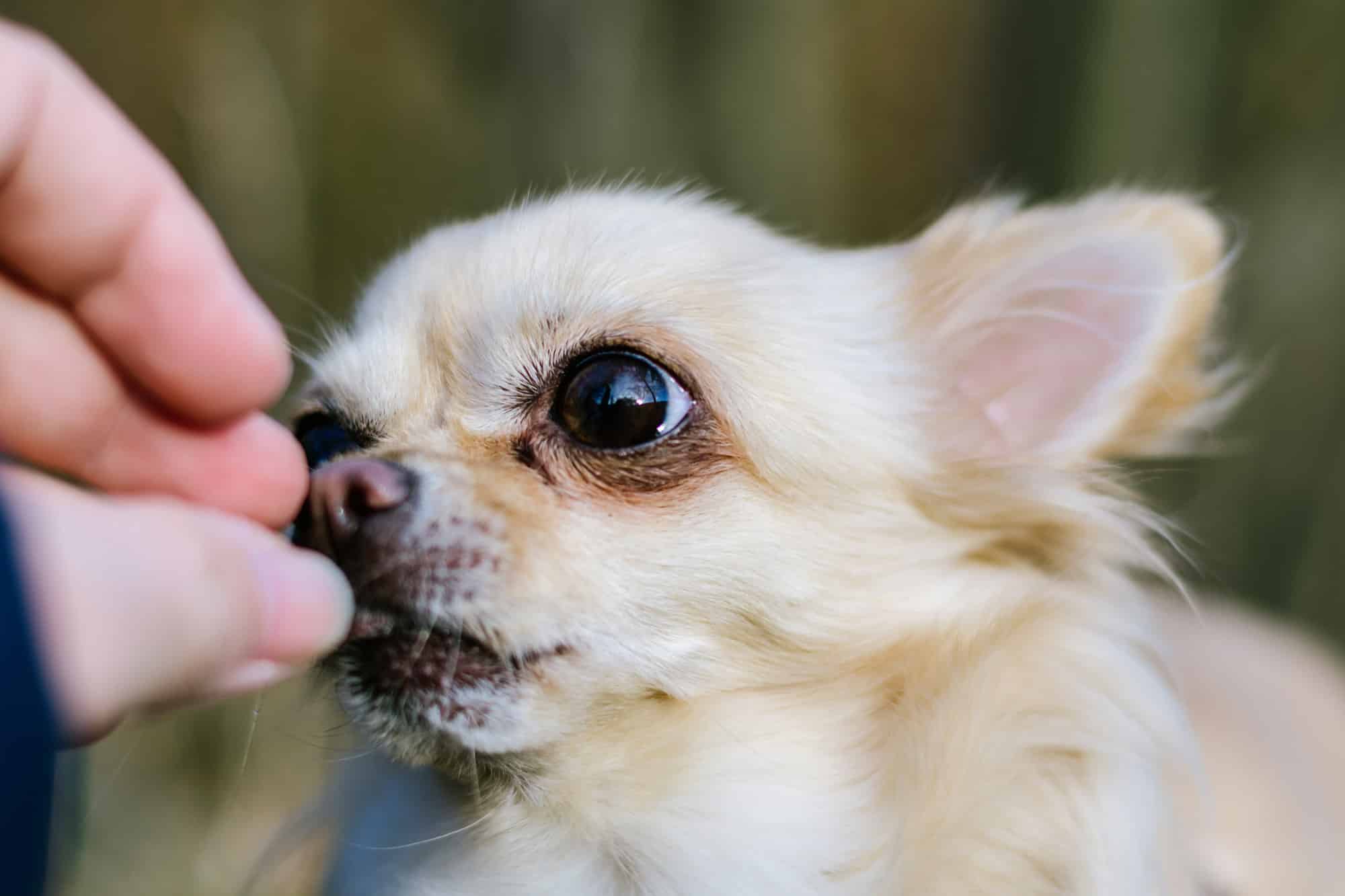Chihuahuas, known for their compact stature and large personalities, are not a one-size-fits-all breed. While their spirited character remains consistent, key differences emerge when contrasting males to females. From distinct behavioral tendencies and health concerns to subtle physical variations, each gender brings its own set of traits to the table. Join us as we unpack the defining differences between male and female Chihuahuas and explore what makes each unique.
Comparing a Male and Female Chihuahua
| Feature/Aspect | Male Chihuahua | Female Chihuahua |
|---|---|---|
| Size | Average height (adult): 5–9 inches Average weight (adult): 2–6 pounds | Average height (adult): 4–7 inches Average weight (adult): 2–6 pounds |
| Reproduction | Sexual Maturity: 7-8 months Breeding Age: 1 year old Prime Breeding Period: 1-5 years | Initial Heat Caution: Avoid breeding during the first heat due to young age and potential complications. Recommended Breeding Age: During second or third heat, but before turning 3 years old. Breeding Criteria: Chihuahua should have correct conformation, a wide pelvic area, and a good tuck-up for safer carrying and delivery of pups. |
| Health | Cryptorchidism: Undescended testicle(s) risk. Prostate Cancer: Major concern; spreads rapidly. Behavioral Issues: Reduced by neutering. | Heat Cycle: Leads to withdrawal or anxiety. Reproductive Health: Risk of cancers, cysts, and life-threatening uterus infection. |
| Temperament | Affection: Clingy and constantly seeks reassurance. Maturity: Physically matures faster but remains emotionally puppy-like longer. Family Dynamics: Bonds with the entire family and protective, but better as the only dog. | Affection: More independent; bonds deeply with one human. Maturity: Matures faster; less “puppy” behavior. Interaction: Calmer with strangers and other dogs but prefers being the only pet. Family Dynamics: May prefer one family member over others |
| Training | Easily distracted; prefers playtime. Risk of aggression without early training. Best motivated by attention and praise. | More focused; matures faster emotionally. Less motivated by food and affection. Benefits from short, consistent sessions. |
Male vs. Female Chihuahua: Size
Chihuahuas, being among the smallest dog breeds have sizes that don’t drastically vary between genders. However, for the blind eye, subtle differences can be noticed. Male Chihuahuas tend to be just a tad bulkier, with a slightly more defined chest and sometimes an increased weight. This difference, though small, can make them appear just a bit sturdier. Female Chihuahuas have a more delicate build. They stand a little shorter and weigh a bit less than males. The difference is so subtle, though, that unless you’re comparing them side by side, it will be tough to discern. However, those truly familiar with the breed might be able to spot these distinctions.

Many differences between male and female Chihuahuas are subtle.
©MirasWonderland/Shutterstock.com
Male vs. Female Chihuahua: Reproduction
Male Chihuahuas reach sexual maturity around 7 to 8 months of age. However, even though they might be capable of breeding, it’s generally recommended to wait until they are at least 1 year old. This waiting period ensures they are fully developed both physically and sexually. From the age of 1 up to 5 years, male Chihuahuas are generally in their reproductive prime.
Breeding female Chihuahuas, on the other hand, can be notably complex. Due to their small bodies and large heads, they often require C-sections, making the breeding process expensive and risky. Females can technically start breeding from about 2 years of age, but experts often recommend waiting until they are around 3 years old. This delay allows them to achieve full physical maturity, enhancing their ability to bear the strain of childbirth, particularly concerning their hips and pelvic floor.
First-time breeding should be avoided during their initial heat cycle as it can lead to various complications. It is best to aim for the second or third heat cycle, but ideally, before they turn three years old, to balance between physical maturity and optimum reproductive health. A critical aspect to note is the necessity for a female Chihuahua to have the right size body, including a wide pelvic area and a good ‘tuck-up’, to ensure safer carrying and delivery of puppies. These considerations help reduce the risks associated with childbirth, promoting a smoother, safer delivery process.

In order for a female Chihuahua to safely carry and deliver puppies, she must have the right body size, including a wide pelvic area and a good ‘tuck-up’.
©Toro_The_Bull – Arturelia/Shutterstock.com
Male vs. Female Chihuahua: Health Considerations
Male Chihuahua
Cryptorchidism: This is a medical condition where one or both testicles do not descend as they should. This doesn’t just impact breeding but also carries significant health risks. If the undescended testicles remain inside the body and are not surgically removed, it can lead to testicular cancer.
Prostate Issues: Prostate cancer is another significant health concern for male Chihuahuas. It’s not only prevalent in this breed but is a leading cancer type in almost all dog breeds. Regular veterinary check-ups are essential to catch and treat this condition early. Apart from cancer, males can have other prostate-related problems, such as benign prostatic hyperplasia (BPH) or prostatitis, an inflammation of the prostate gland.
Neutering a male Chihuahua offers numerous health benefits, including a reduced risk of prostate issues and elimination of the risk associated with cryptorchidism. Neutering also tends to diminish aggressive behaviors, reduces the tendency for territorial marking, and minimizes problematic sexual behaviors. However, it’s crucial to note that neutering should be ideally done when the Chihuahua is around 18 months old. Neutering too early can impact the dog’s development and temperament.
Female Chihuahua
Heat Cycle Challenges: When a female Chihuahua enters her heat cycle, hormonal changes can lead to mood swings and noticeable physical changes. This can sometimes lead to them feeling withdrawn or anxious.
Mammary Issues & Reproductive Cancers: Female Chihuahuas are susceptible to mammary tumors, cysts, and mammary cancers. Regular checks for lumps or abnormalities around the mammary glands are vital. Early spaying, before the first or second heat, can significantly reduce the risk of mammary cancers.
Pyometra: This is a severe, life-threatening condition that affects unspayed females. It’s an infection of the uterus and can be lethal if not addressed promptly. Symptoms might include lethargy, increased drinking and urination, vaginal discharge, and a bloated abdomen.
Spaying a female Chihuahua has a plethora of benefits, from reducing the risk of unwanted litters to eliminating the chances of pyometra and significantly reducing the risk of certain cancers. Also, spaying avoids the challenges associated with the heat cycle, such as bleeding and behavioral changes.
Male vs. Female Chihuahua: Temperament
Male Chihuahuas are clingier and may display more insecurity than females. They thrive on constant reassurance from their owners. This attachment can be endearing but also demanding. They also mature emotionally at a slower pace, maintaining puppy-like behavior longer.
Females present a contrast. They’re more independent and may prefer to be alone or with their chosen human. Their behavior is less “puppy-like” as they mature faster emotionally, leading to a calmer demeanor. They might be wary of strangers and display more loyalty to a single member of the family.

Male Chihuahuas are clingier than females.
©iStock.com/Jan Rozehnal
Male vs. Female Chihuahua: Response to Training
Male Chihuahuas, with their affectionate nature, often crave attention. This can be leveraged as a training tool, using praise as a primary reward. However, their playful tendencies can make them easily distracted. Short, engaging training sessions filled with positive reinforcements, like pets and attention, work best. Avoid long training sessions as their playful demeanor might waver in focus.
Females present a more focused demeanor in training, thanks to their faster emotional maturity. Their independent streak means they might not be as motivated by affection or treats. Nevertheless, positive reinforcement still works; it just requires a bit more creativity. As with males, short but productive sessions are ideal. Overextending their patience could lead to disinterest.
Ready to discover the top 10 cutest dog breeds in the entire world?
How about the fastest dogs, the largest dogs and those that are -- quite frankly -- just the kindest dogs on the planet? Each day, AZ Animals sends out lists just like this to our thousands of email subscribers. And the best part? It's FREE. Join today by entering your email below.
Thank you for reading! Have some feedback for us? Contact the AZ Animals editorial team.








